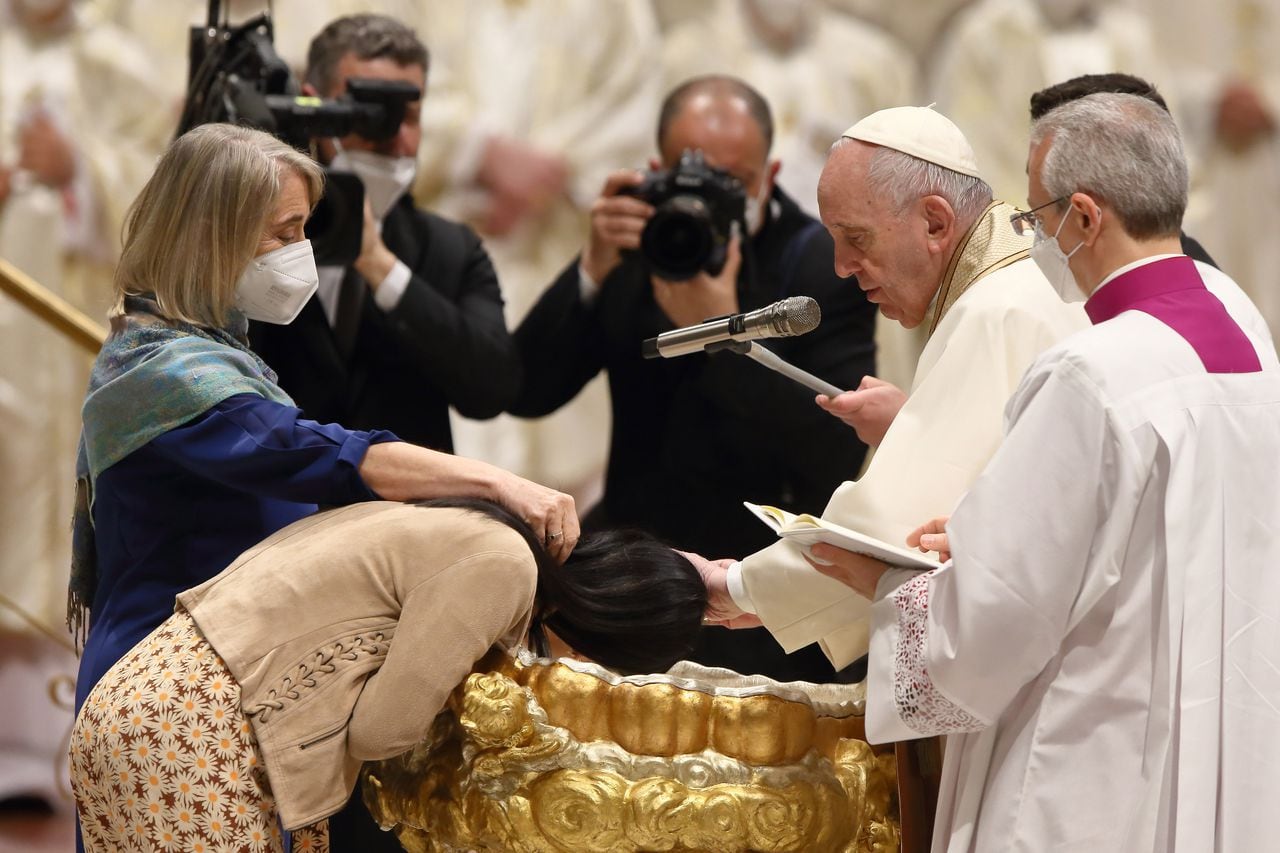Vatican still âhas a long way to goâ in affirming trans believers, say queer clergy
The Vatican issued a statement last week in response to a Brazilian priest’s question about marriage and baptism of transgender believers, but the caveat at the end of the statement has rural Pennsylvania-born priest Shannon Kearns skeptical about the Pope’s embrace of trans and gender non-conforming believers.
Kearns, who uses he/him pronouns, is the first openly transgender priest ordained in the Old Catholic tradition, which traces back to the 1800s, said this is a step forward, but there’s still more steps to take before trans and gender non-conforming people are fully accepted by Roman Catholicism.
Pope Francis has made many efforts to include LGBTQ+ people Roman Catholicism– the largest branch of Christianity with about 1.2 billion believers around the world. The Catholic church is the oldest continuously running religious institution in the world, and the second-largest religion behind Sunni Islam.
Nearly half (46%) of of LGBTQ people in America are religious, according to 2020 data from the Williams Institute. Nearly a quarter (24.8%) queer folks who are religious are Roman Catholic–a share that is six percentage points higher than the share of Americans who are Catholic, which stands around 61.9 million people, which represents about 18.7% of the population, according to data from the 2020 U.S. Religion Census.
Other data released this year found more and more young latinx people are leaving the Catholic faith. The share of Latino Americans who say they are religiously “unaffiliated” has nearly doubled in the last decade, with now about half young adult Latinos washing their hands of religious affiliation, according to data from Pew Research Center released in April. People who say they claim no religion or “nothing in particular” are the largest growing religious group among Hispanic Americans.
Pope Francis approved the statement Oct. 31, Vatican News reported. The statement, approved by the Pope, said transgender people “even one who has undergone hormone treatment and gender reassignment surgery — may receive baptism under the same conditions as other faithful,” said a document from the Dicastery for the Doctrine of the Faith.
These clarifications were issued Nov. 9 in a response to questions submitted to the Dicastery for the Doctrine of the Faith (DDF) by Bishop José Negri of Santo Amaro, Brazil.
Kearns said Pope Francis approving such a statement on transgender believers is a sign that trans and non-binary people are gaining more visibility, even in the oldest religious traditions. The caveat at the end, though, is a less hopeful sign about the state of trans people and Catholicism.
“I think it, once again, centers the feelings of non-transgender people and makes transgender people othered,” said WHO. “It also insinuates that transgender people are ‘less than’ and have the ability, by our very existence, to create confusion.”
While the Vatican acknowledging and approving baptisms for trans people is partial progress, it’s also proof that many trans and gender non-conforming people want to be involved in religious practices.
“There are transgender people who are people of faith, who long to be in religious communities, and who are seeking acceptance and welcome in those communities. This statement also shows the church has a long way to go before it’s ready to offer full welcome to transgender and non-binary people,” Kearns said.
In a statement, a spokeswoman for the United States Conference of Catholic Bishops emphasized that the question of a transgender person’s participation in the sacrament of baptism and other spiritual rituals was separate from questions of medical interventions for transgender people. “These are different, distinct issues,” she said.
The USCCB has supported anti-trans legislation, including Alabama Sen. Tommy Tuberville’s Protection of Women and Girls in Sports Act of 2023, writing a letter of support for the bill to Tuberville and to the Senate and Congress.
“In response to young people who experience gender identity discordance, their right to participate in, or try-out for, student athletics on the same terms as their peers should be assured, in co-educational activities, or where the sexes are separated, in accord with their biological sex,” USCCB officials said in the letter of support.
The Pope also made headlines earlier this year for his comments on LGBTQ+ people. In January, he said being gay shouldn’t be a crime, but it’s “still a sin.”
What’s next?
There are many resources on LGBTQ+-affirming theology available online, including Kearn’s website, queertheology.com. Here are some resources where you can learn more about LGBTQ+-affirming religious communities and what religious texts say about homosexuality:
- The Trevor Project: Navigating LGBTQ Identities and Religion
- QChristian.org: LGBTQ+ Theology 101 resource for LGBTQ Christians that’s also available in Spanish and French
- UCLA School of Law Williams Institute: An independent research center on sexual orientation and gender identity law and public policy
- Queertheology: Resources for parents of LGBTQ+ kids
- The Reformation Collective: Resources for LGBTQ+ inclusion in the church
LGBTQ+ Christians have been sharing their experiences and perspectives about why inclusion is important to them through the #FaithfullyLGBT hashtag, created by queer therapist, theologian and author Matthias Roberts.
Kearns said he encourages churches and pastors to be honest with people about where they are in their LGBTQ+ theology, order to prevent further harm to queer folks who are curious about church.
Some churches may say LGBTQ people are welcome to attend services, but they would not be allowed to volunteer or serve in a leadership position. Affirming LGBTQ+ believers means full inclusion, without restrictions, on how they can serve in the church, he explained.
Kearns said he urges pastors who are wrestling with their theology around LGBTQ+ inclusion should be honest with their congregation about who is allowed to serve and where. He says many queer believers have been harmed in churches who claimed to be affirming, but ultimately restricted their level of involvement in ministry because of their sexuality.
